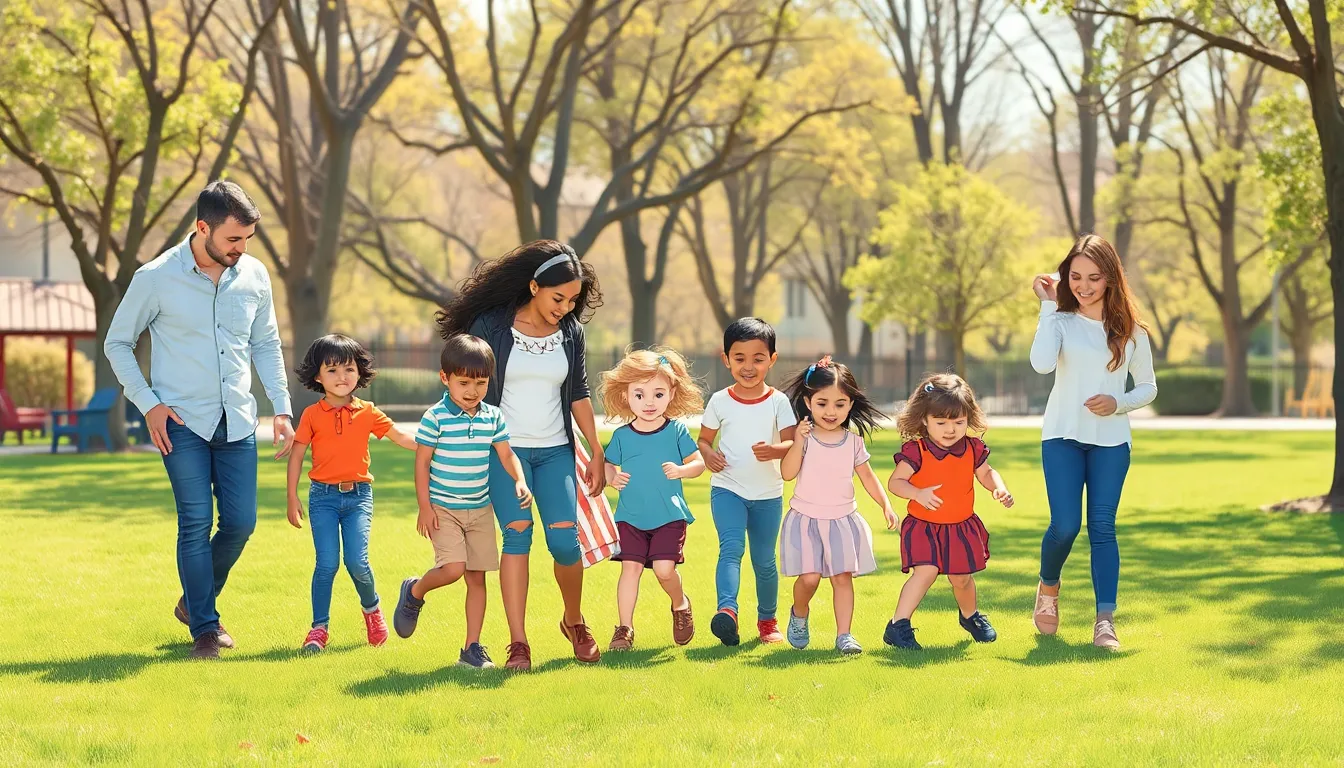Imagine a world where every child has a safe place to land, a warm bed to snuggle into, and someone to cheer them on. The foster care system aims to make that dream a reality, stepping in when families face challenges. It’s like a superhero team for kids—complete with capes, but maybe without the spandex.
While the system has its quirks and complexities, it’s essential to understand its purpose and impact. With over 400,000 children in foster care in the U.S. alone, there’s a pressing need for compassionate foster families and supportive communities. Dive into the world of foster care, where love, resilience, and a sprinkle of humor can create lasting change for children in need.
Table of Contents
ToggleOverview Of The Foster Care System
The foster care system serves as a critical support structure for children who cannot remain in their homes due to various challenges. It offers temporary, safe placements while working toward reunification or permanent solutions.
Definition And Purpose
The foster care system provides care for children removed from their families for reasons like abuse, neglect, or parental incarceration. This system aims to ensure a stable environment where children can thrive. Interventions include improving life circumstances and offering counseling, education, and medical care. By focusing on the children’s needs, the system supports them emotionally and physically. Reunifying families whenever possible tops the priority list, fostering resilience in children.
Key Components
Several key components shape the foster care system. Licensing regulations ensure caregivers meet specific standards before fostering children. Ongoing support from social workers provides guidance and monitoring for foster families. Various training programs equip foster parents with skills to handle unique challenges. Additionally, collaboration with community organizations helps access resources for children and families. Each of these components contributes to the holistic well-being of children in care. Ultimately, the system emphasizes love, stability, and security as essential elements for positive development.
History Of The Foster Care System

The foster care system’s history reflects societal shifts in how communities support vulnerable children. Since its inception, the focus has evolved toward enhancing child welfare and responding to family dynamics.
Evolution Over The Years
Initially, foster care emerged in the early 19th century as orphanages began to decline. Children often lived in institutions, lacking personal connections. By the mid-20th century, the preference shifted toward family-based care, promoting stability. The late 20th century brought further reforms, emphasizing the importance of kinship care, where relatives provide a safer environment. Today, the system supports over 400,000 children annually, addressing their diverse needs while prioritizing their emotional and physical well-being.
Legislative Milestones
Several landmark legislations significantly shaped the foster care system. The Adoption Assistance and Child Welfare Act of 1980 introduced federal funding for states to support foster care placements. The 1997 Adoption and Safe Families Act reinforced timely permanency planning for children. In 2014, the Preventing Sex Trafficking and Strengthening Families Act aimed to protect at-risk youth and improve their outcomes. These legislative milestones helped enhance the system and create a more responsive framework for child welfare.
Types Of Foster Care
Various types of foster care exist to meet the diverse needs of children in the system. Each type focuses on providing stability and support tailored to individual situations.
Traditional Foster Care
Traditional foster care involves placing children in family homes when they cannot remain with their biological families. Caregivers support children emotionally and physically, fostering a nurturing environment. Many of the 400,000 children in U.S. foster care receive placement through this avenue. Foster parents typically undergo training and licensing to ensure they can meet the children’s needs. Regular visits from social workers provide ongoing assessments and support for both caregivers and children.
Kinship Care
Kinship care allows relatives or close family friends to take care of children removed from their original homes. This type of care aims to maintain familial connections while offering a safe space for the child. Often, children feel more secure with familiar faces and settings. Around 30% of children in care receive kinship placements, which underscores the importance of existing relationships. State programs may assist kinship caregivers with resources and guidance to promote successful caregiving experiences.
Therapeutic Foster Care
Therapeutic foster care caters to children who need additional emotional and behavioral support. Trained foster families work with children facing significant challenges, such as trauma or mental health issues. These caregivers implement specialized techniques to address individual needs effectively. Support from therapists and social workers is crucial in this type of care, ensuring children receive comprehensive treatment. Therapeutic foster care not only fosters stability but helps children build resilience through tailored interventions.
Challenges Within The Foster Care System
Numerous challenges exist within the foster care system that impact children, families, and caregivers. These difficulties can hinder the overall effectiveness of the system and affect the well-being of those involved.
Placement Instability
Placement instability significantly affects over 400,000 children in foster care. Frequent moves disrupt children’s sense of security and belonging. Each new placement can lead to emotional trauma, creating hurdles in forming meaningful relationships. Foster parents often face challenges in managing transitions without adequate support. Stability should remain a primary focus to foster healthy development.
Emotional And Psychological Effects
Children in foster care frequently experience emotional and psychological challenges. Feelings of abandonment or rejection may arise due to multiple placements. High rates of anxiety, depression, and behavioral issues have been documented in this population. Supportive services can mitigate these effects, yet many children do not receive the necessary intervention. Promoting emotional well-being requires consistent access to mental health resources.
Resource Limitations
Resource limitations create significant obstacles within the foster care system. Funding constraints impact the availability and quality of services for children and families. Many foster parents lack access to necessary training or support networks to navigate challenges effectively. Social workers may face overwhelming caseloads, decreasing their ability to provide personalized attention. Addressing these limitations is crucial to improve outcomes for children in care.
Success Stories And Positive Outcomes
Positive outcomes emerge from success stories in the foster care system. These narratives often showcase the resilience of children and the transformative power of supportive family environments.
Impact On Children
Children in foster care experience significant benefits when placed in nurturing homes. Research shows that stable placements lead to improved emotional well-being, with lower rates of anxiety and depression. Education improvements also occur, as children become more engaged and perform better in school. Supportive relationships with foster parents correlate with higher self-esteem and resilience. These positive experiences foster hope and stability, helping children envision brighter futures.
Role Of Foster Parents
Foster parents play a crucial role in a child’s life. These caregivers provide safe, loving environments that prioritize emotional and physical needs. Many undergo training programs that equip them with strategies to address children’s unique challenges. Open communication fosters trust between foster parents and children, promoting strong connections. Dedicated foster parents often advocate for educational support and mental health resources, helping children thrive both in and out of the classroom. Their commitment directly influences a child’s development and overall happiness.
The foster care system plays a vital role in shaping the lives of vulnerable children. By providing safe and nurturing environments, it addresses their emotional and physical needs while fostering resilience and hope.
Communities and compassionate foster families are essential in creating lasting change. With ongoing support and collaboration, the challenges faced by children in care can be mitigated, allowing them to thrive.
The journey of these children is often marked by obstacles but also by remarkable stories of growth and transformation. Through collective efforts, society can ensure that every child in foster care has the opportunity to envision and achieve a brighter future.




